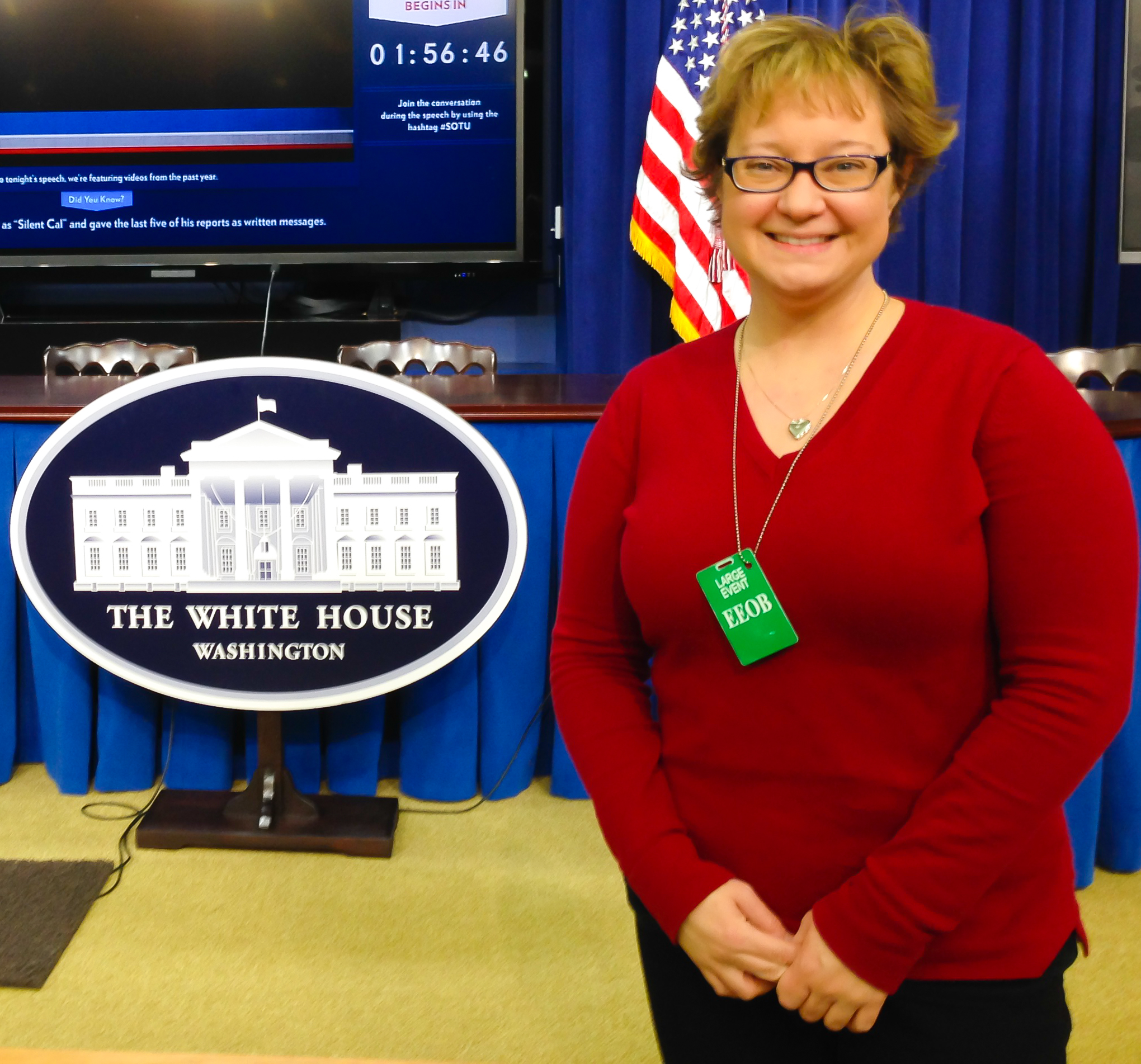
Tweeting the State of the Union
On January 28, 2014, I attended a White House Social Media social. The day was spectacular. In my previous post, Part I, I discussed my general visit to the White House. In this post I want to share with you how the White House is using social media as a powerful tool in the political process.
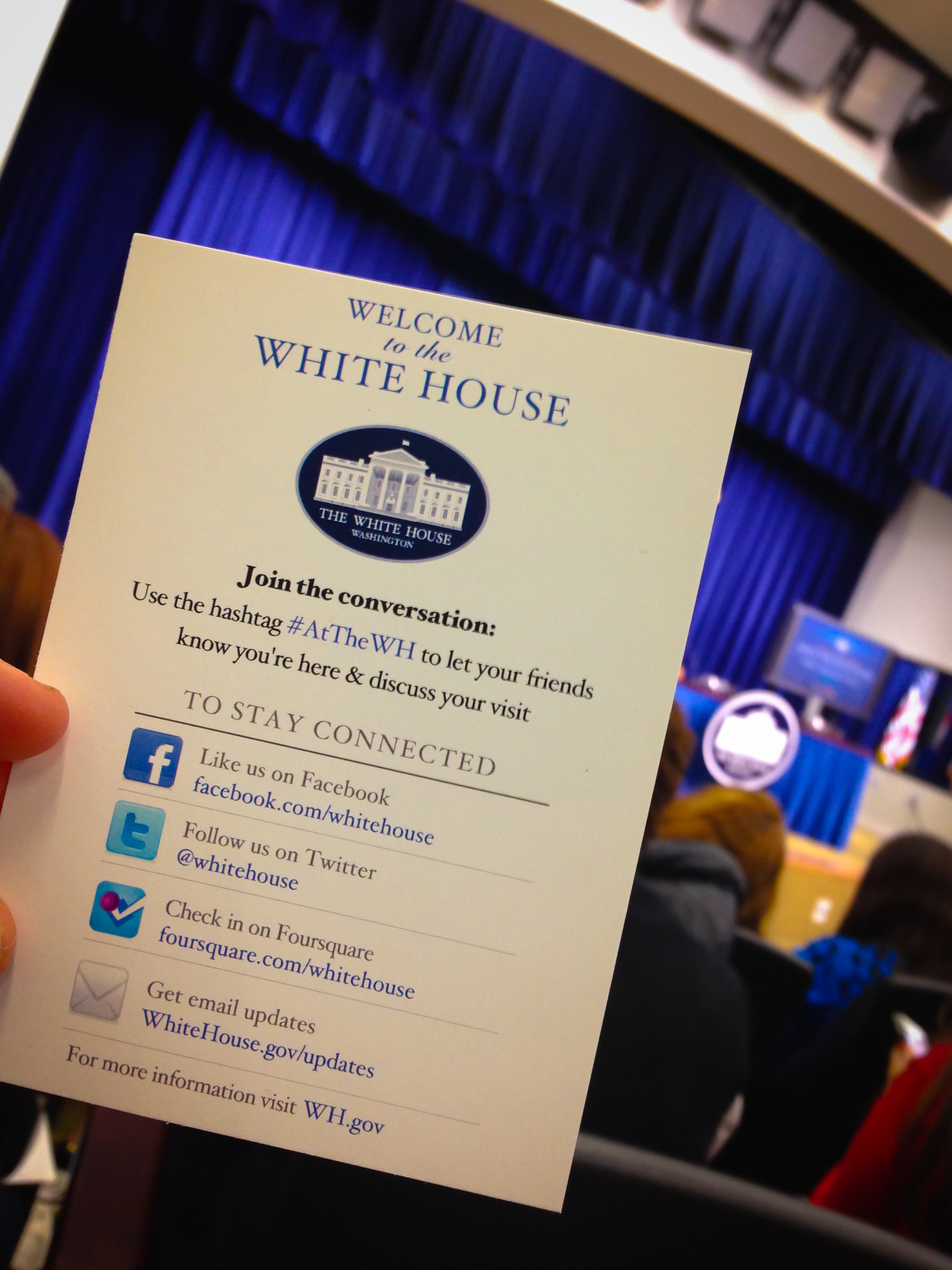
The White House gave out these informational cards to share their information about the event to our followers. They wanted us to use #AtTheWH to let our friends know we were at the White House. I am sure everyone in the room checked into either FourSquare or Facebook that night to share their location.
The White House recently revealed the numbers of the State of the Union on their blog. The White House only chose 60 out of over 2000 applicants to attend the #SOTUSocial.
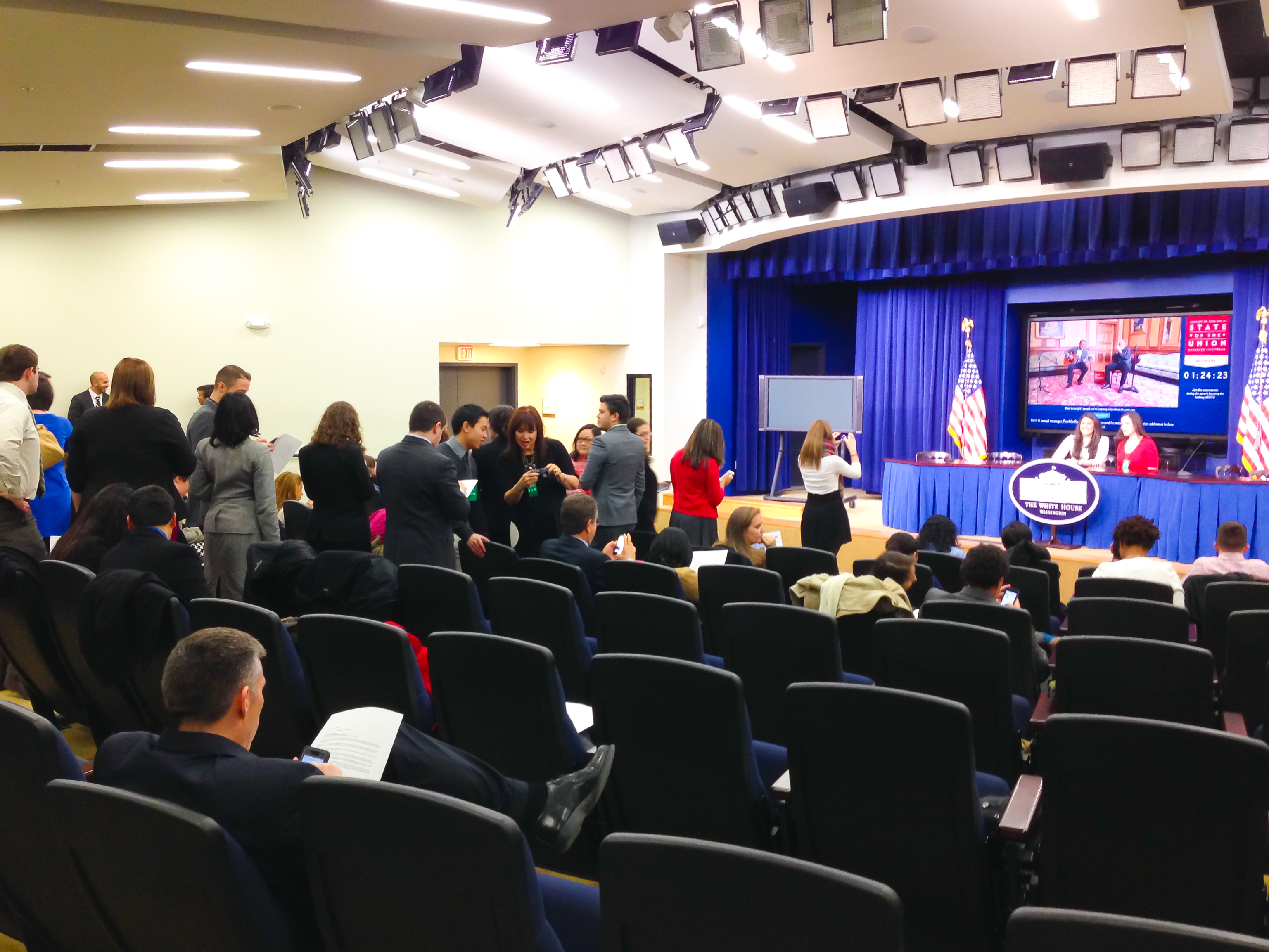
The night started off with socializing and taking pictures next to the White House sign at the table. There are not many times in life that you get invited to the White House for a purpose. The main goal of the #SOTUSocial attendees was to engage our followers in a discussion about the State of the Union address. Our mission was to create awareness of the event.
I was very excited that a few of my friends contacted me to tell me that they created a Twitter account just to follow my social media adventure. This fact alone, after years of trying to tell people the value of social media, me made extremely happy. Knowing my friends were excited made me even more excited about attending the #SOTUSocial.
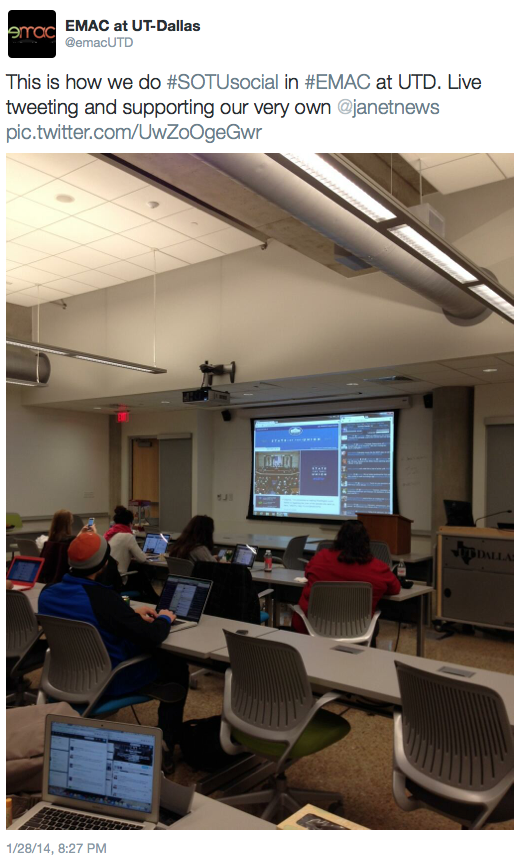 What made me even more giddy was knowing a few students formed a watch party virtually and on campus. I created #utdSOTU so my students and I could create our own discussion about the State of the Union. This created a deeper and richer connection with the #SOTUSocial since most of my students used both hashtags. I felt as if my students were in the room with me. Again, the power of social media allows us to engage in discussion so everyone can participate.
What made me even more giddy was knowing a few students formed a watch party virtually and on campus. I created #utdSOTU so my students and I could create our own discussion about the State of the Union. This created a deeper and richer connection with the #SOTUSocial since most of my students used both hashtags. I felt as if my students were in the room with me. Again, the power of social media allows us to engage in discussion so everyone can participate.
The Twitter Feed
Throughout the entire #SOTUSocial process the Twitter feed was active. Attendees used social media to share their adventures just as I did. Below is the Twitter stream for #SOTUSocial.
Open for Questions
After the State of the Union was over, the White House advisors took to the stage to answer both our questions in the room and questions from the audience online. The White House panel consisted of:
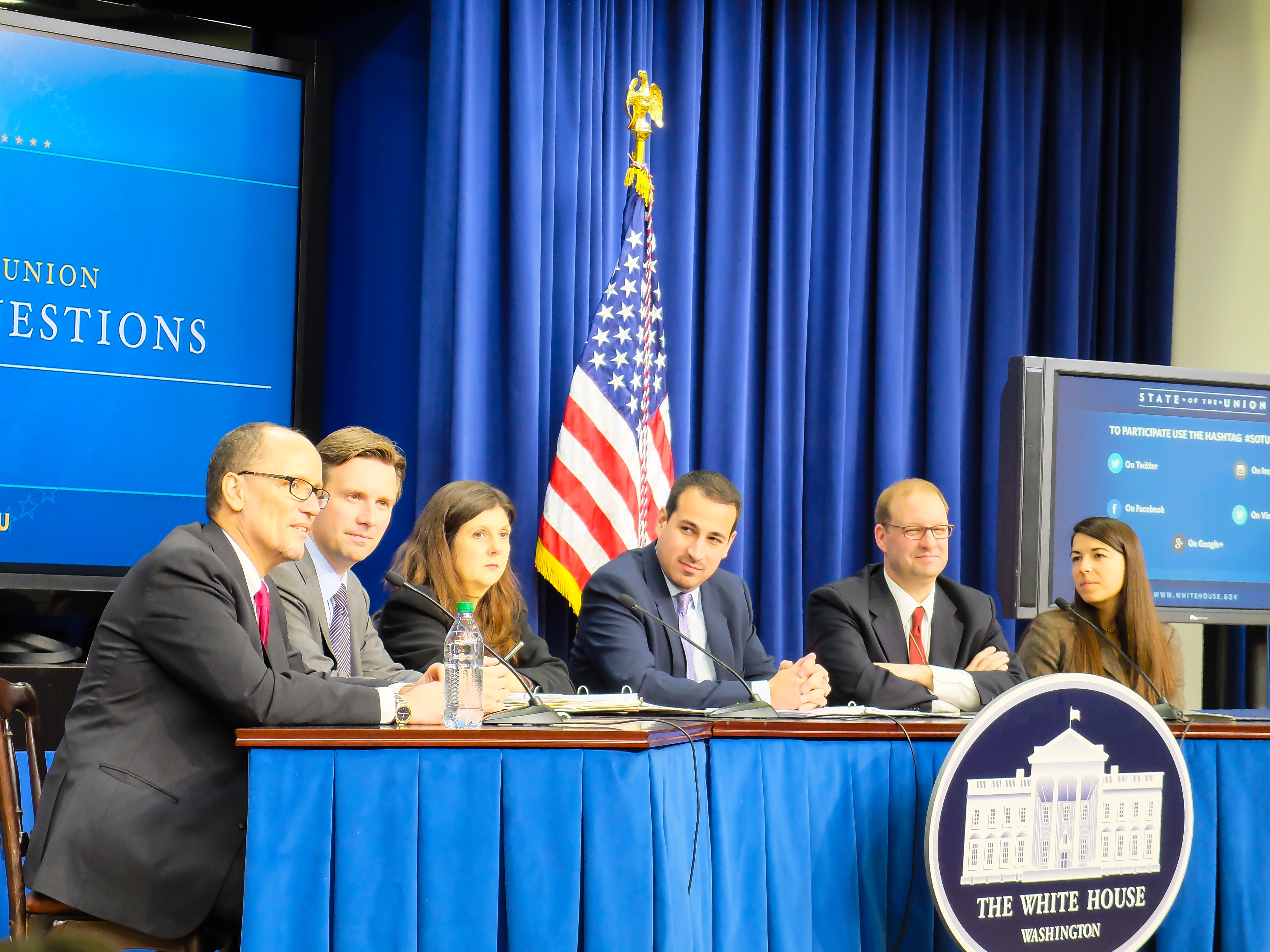
- Josh Earnest, Principal Deputy Press Secretary (@JEarnest44)
- Roberto Rodriguez, Special Assistant to the President for Education Policy
- Betsey Stevenson, member of President Obama’s Council of Economic Advisors (@CEABetsey)
- Dan Utech, Director for Energy and Climate Change (@Utech44)
- Christen Young, Domestic Policy Council
- Marlon Marshall, Principal Deputy Director of Public Engagement
Also, surprise guest, Secretary of Labor Tom Perez stopped by to discuss President Obama’s push to raise minimum wage.
The Open for Questions segment was streamed live after the State of the Union. I think this is a proactive way for the White House to create a great dialogue with the American people. No matter if you voted for President Obama or not–being a proactive citizen in whatever you believe is being an engaged citizen. The White House used #SOTUChat to monitor questions to the panel.
The people who were gathered in that room that night had different ideologies about many different issues. The one thing I learned is that civility that night was high in the room. The #SOTUSocial is about creating knowledgable citizens through social media. No matter what your political affiliation– the State of the Union address is about the STATE OF THE UNION. We may not all agree on all points, but that is okay. Awareness is the first step to creating change.
The White House helps create awareness, of course it is pushing their own agenda, but using social media also creates opportunities to start an open dialogue. No one will always agree, but communicating and allowing people to come together to help others understand is again, something citizens did not encounter 10-20 years ago. In fact, this is the first Administration to use social media in this way to reach the American public in new and exciting ways. Not only do Presidential candidates have to be savvy with social media–all future Administrations will be striving to create effective messages through new venues to reach the digital citizen.
Thomas Farrell in his article in 1976 “Knowledge, Consensus, and Rhetorical Theory,” reiterated what Aristotle explained–“Rhetoric was the art which employed the common knowledge of a particular audience to inform and guide reasoned judgments about matters of public interest.”

Social media helps in that process–opening up a dialogue that 20 years ago was not there. That is the power of social media in the political process. Citizens can talk to the White House after the President addresses the nation. Citizens can share their public opinion instantly. If I did not attend the State of the Union this year, my friends and students would not have watched the President’s address otherwise. The #SOTUSocial is about choosing the right people–from both sides of the fence–to come together and inform their peers who in hopes will inform their peers. The social media influence is endless.
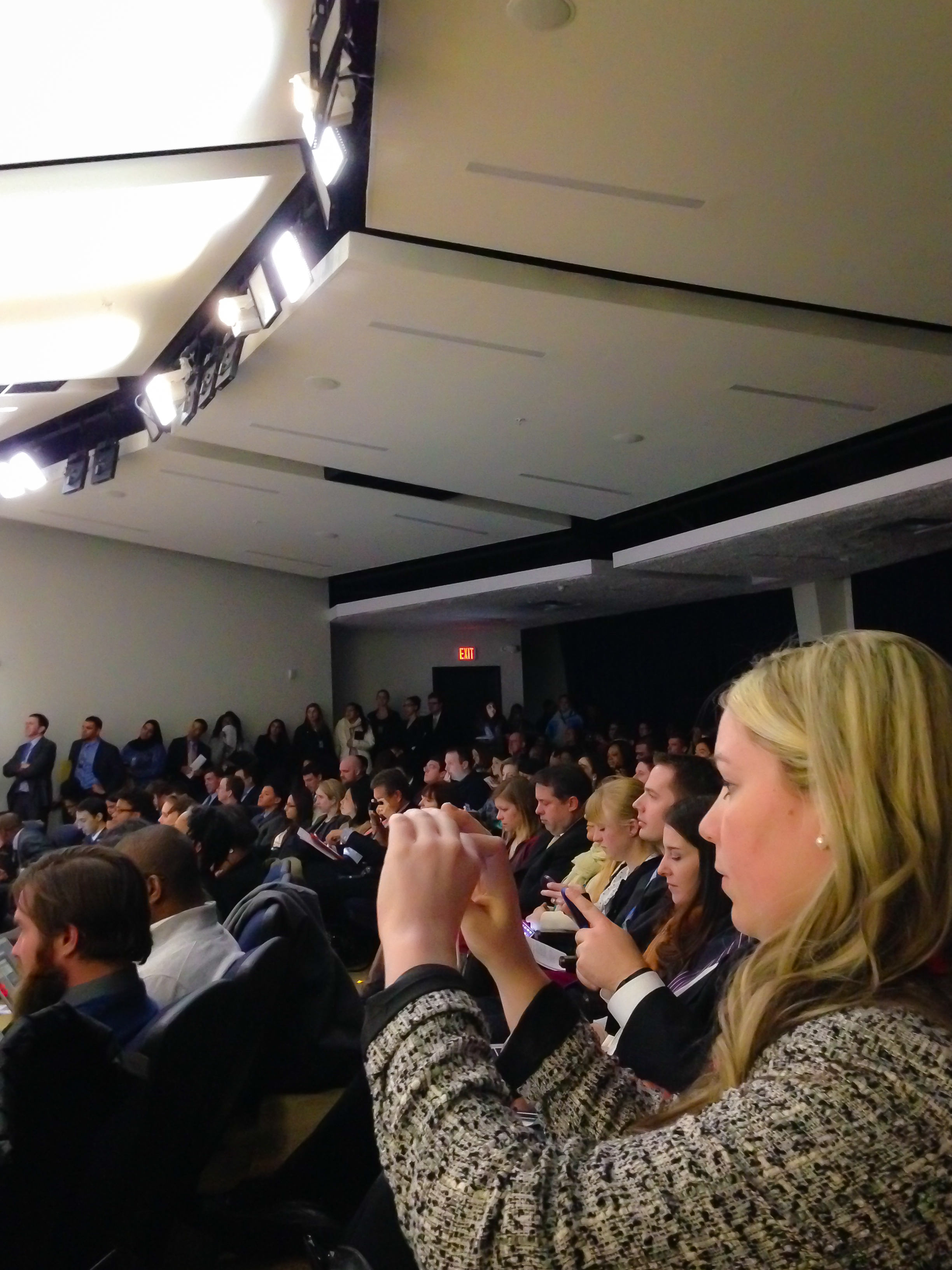
The social media connection that night was high. The tapping of keyboards, the glow of one’s iPad and SmartPhone screens filled the room. The White House did not control the messages being sent out. The night was an All American experience. The President gave his speech–and digital citizens became the political pundits reiterating, suggesting, and questioning. It was an honor to be a social media leader that night. I hope to have many more White House experiences in the future.
Here are some past White House Social Events.
I posted to Instagram while I was in Washington, D.C.
You can scroll through my Instagram pictures here:

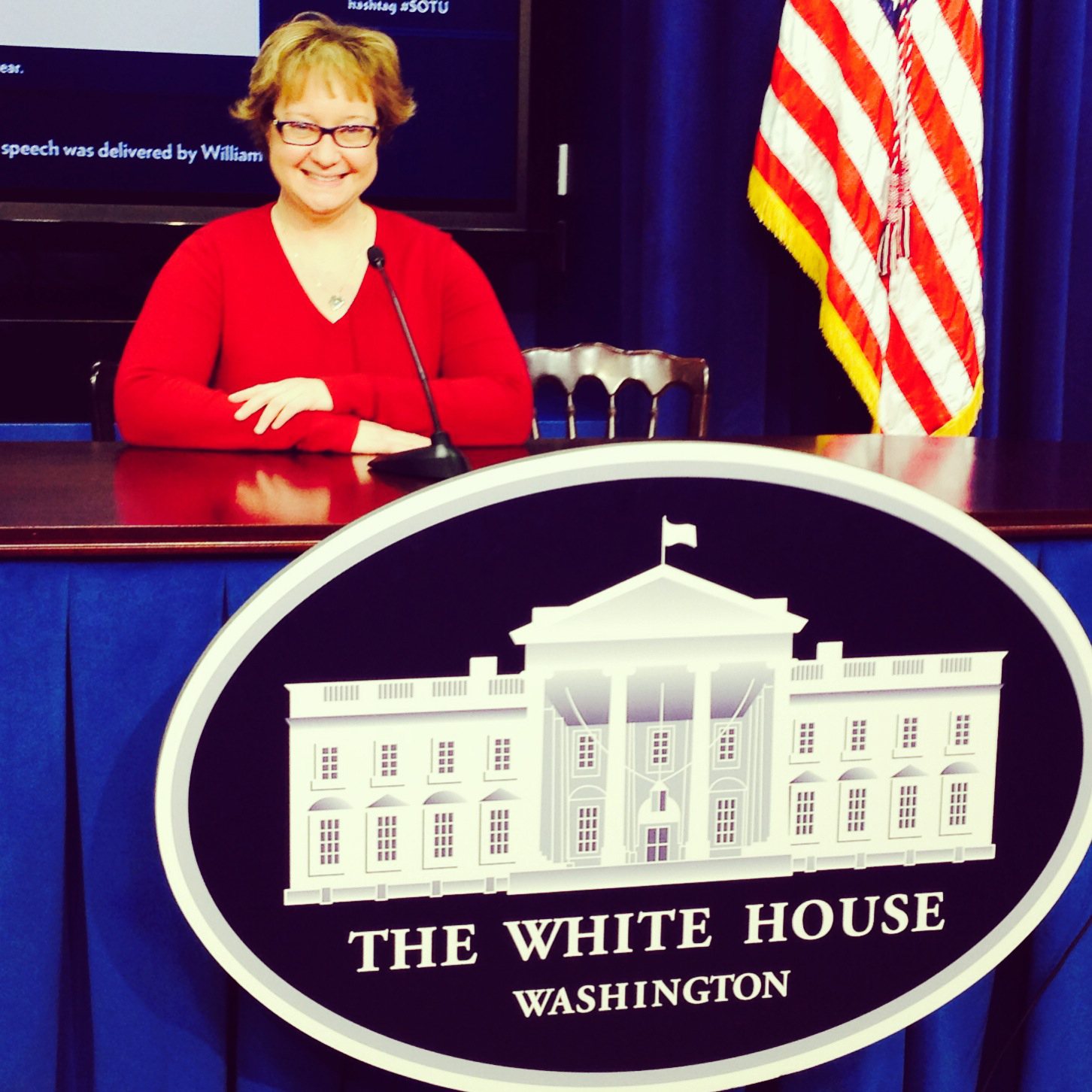

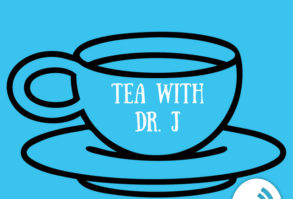

1 comments On Invited to the White House: Tweeting the #SOTUSocial Part II
Pingback: The Road to the White House #SOTUSocial #WHSocial ()